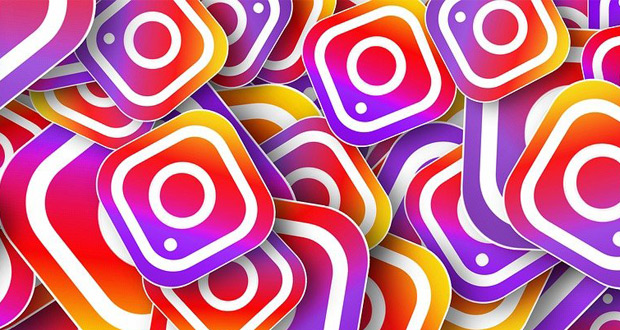By
In an ever-changing landscape, today’s marketers are required to stay on their toes. As technologies advance and business conditions shift, so do the components that make up an effective marketing strategy. This is especially important for startup founders, who consistently need to find creative ways to market their innovative products. Despite operating on a limited budget, startups can indeed execute successful marketing strategies and campaigns by leveraging trending tactics while remaining up to date on evolving sociopolitical and legal changes that impact marketers.
As a fractional CMO at a number of growing startups, I too must stay on top of the constant evolution of the marketing space, strategies, tactics and tools to provide accurate and timely marketing guidance. Here are four of the most powerful marketing trends I have come across that you should consider when you’re developing your startup’s marketing plan in 2023.
1. Data Privacy And User Centricity
The last two years brought about major changes to the way user data is collected and used. These changes were driven by increased government legislation; consumer mistrust and an extreme level of competition in the technology industry may also have contributed. Consumers seem to be more aware and outspoken than ever about who is collecting their data, how it is being used and what rights they should have to protect it. From the death of third-party cookies to Apple making significant changes to its privacy features, the management of big data is becoming rapidly more user-centric. Companies are handing power back to the user and letting them control how much data they are willing to share. I think this trend is only going to continue through 2023.
These changes could impact your startup’s marketing strategy, as marketers must now meet consumers’ high expectations when it comes to safeguarding their data. You should cultivate trust among your customers by being transparent, such as by including easily accessible privacy policies and terms and conditions on your website. And without third-party cookies to rely on, your startup may have to target consumers differently, without using their specific data. For example, you might do so contextually. Additionally, consider incentivizing your consumers by offering them a discount or promo code in exchange for their email address or phone number, and always provide an option to opt out. This way, you are connecting with consumers who feel that they are gaining something in return for their data.
2. Podcasts And Audio Advertising
According to Statista, “the number of podcast listeners [could] surpass 160 million in 2023 after increases of around 20 million each year.” The versatility of podcasts makes them a great opportunity for marketers in that consumers can be reached anywhere at any time about virtually any topic. In the case of startups, you can use podcasts to showcase the innovations and solutions you provide, which can help position your brand as a thought leader in the industry. Consider starting your own podcast or have your startup’s founder be a guest on a podcast with an established following.
Audio advertisements in podcasts also flourished this year, and I expect this to continue into 2023. A study by Signal Hill Insights and Cumulus Podcast Network found that three out of four weekly podcast listeners say they have taken action after hearing a podcast ad. Podcast listeners can enjoy a seamless listening experience when the host integrates ads into the show instead of using prerecorded audio ads that do not fit in and disrupt the content. Podcast advertising can be an effective tactic in your startup’s marketing strategy, as it can raise awareness among your target consumers, especially if you run ads on podcasts with topics that are closely related to your product.
3. Augmented And Virtual Reality Experiences
The Covid-19 pandemic’s acceleration of all things virtual caused businesses to invest in innovative technologies that would help them weather the storm. When physical stores were forced to close, many brands developed augmented reality experiences so that consumers could get the in-store feeling at home. For example, Burberry’s Pocket Bag AR campaign in 2021 allowed consumers to design and view their own 3D handbag sculptures based on Burberry’s new campaign. In years to come, I expect that AR and VR technologies will only become more integrated into marketing campaigns as consumers signal that they want unique experiences and interactions with the brands they love.
AR and VR experiences can provide a space for startups to flex their creative muscles and do what they do best: innovate. From virtual try-ons to wearable NFTs, there are plenty of ways to incorporate augmented reality into your marketing strategy. While it can be expensive, startups may also be able to find more affordable options.
4. Purpose-Driven Marketing
While purpose-driven marketing is not a new strategy, it seems to have become more prevalent in recent years in response to consumers’ interest in social causes. Purpose-driven marketing involves centering your organization’s marketing and communications efforts around a social cause. This strategy not only humanizes businesses but can also help consumers foster a deeper connection with the brands they use and trust. There are copious examples of purpose-driven marketing from small and large brands alike, but one of the most famous is that of the footwear brand TOMS and its “One for One” model that donated a pair of shoes to someone in need for every pair it sold. Supporting a social cause through your startup’s marketing strategy is a great way to build consumer trust and brand loyalty, especially when the cause is something closely related to your startup’s core values.
Staying up to date on marketing trends in your respective industry can help you understand what channels and tactics are in demand. By applying this knowledge to your marketing plan, you can ensure that it is timely and relevant and allow your marketing communications to reach their target audience exactly how and when they need to. Startups working with limited resources can start by implementing one or two of the above trending tactics to strengthen their 2023 marketing plan.
Feature Image Credit: getty
By
Founder of Prosh Marketing, a Fractional CMO & Marketing Agency that helps Startups & SMBs build their marketing practice and go to market. Read Roshni Wijayasinha’s full executive profile here.













